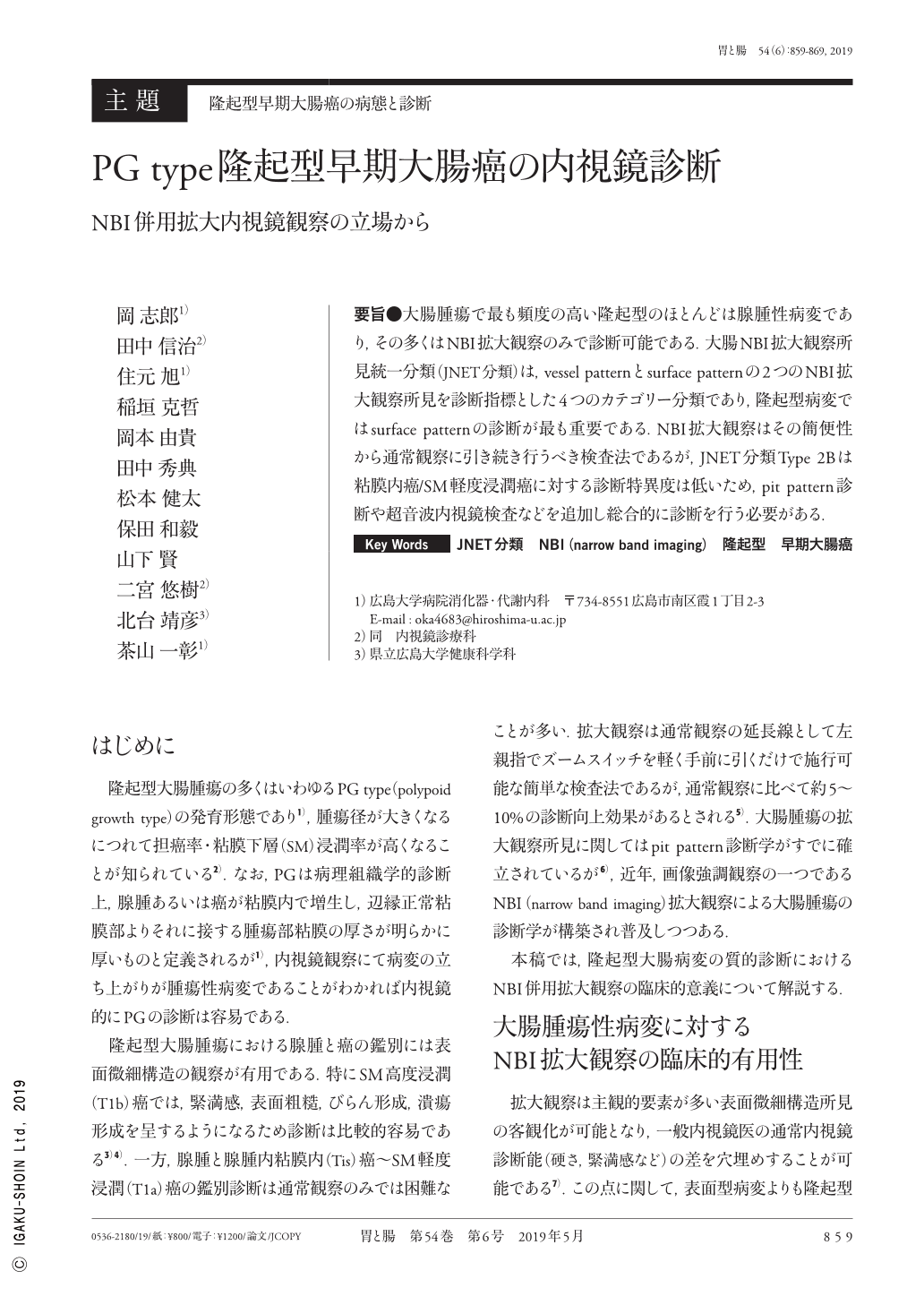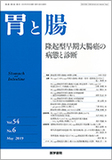Japanese
English
- 有料閲覧
- Abstract 文献概要
- 1ページ目 Look Inside
- 参考文献 Reference
- サイト内被引用 Cited by
要旨●大腸腫瘍で最も頻度の高い隆起型のほとんどは腺腫性病変であり,その多くはNBI拡大観察のみで診断可能である.大腸NBI拡大観察所見統一分類(JNET分類)は,vessel patternとsurface patternの2つのNBI拡大観察所見を診断指標とした4つのカテゴリー分類であり,隆起型病変ではsurface patternの診断が最も重要である.NBI拡大観察はその簡便性から通常観察に引き続き行うべき検査法であるが,JNET分類Type 2Bは粘膜内癌/SM軽度浸潤癌に対する診断特異度は低いため,pit pattern診断や超音波内視鏡検査などを追加し総合的に診断を行う必要がある.
NBI(narrow band imaging)magnifying endoscopic classification of colorectal tumors has been proposed by the Japan NBI Expert Team(JNET). The JNET classification consists of four categories, including types 1, 2A, 2B, and 3, which are associated with the histopathological findings of hyperplastic polyp/sessile serrated polyp, low-grade intramucosal neoplasia, high-grade intramucosal neoplasia/shallow submucosal invasive carcinoma, and deep submucosal invasive carcinoma. According to the JNET classification, there is no significant difference in the diagnostic ability between protruded-type lesions and superficial lesions. In clinical practice, a majority of the protruded-type colorectal adenomatous lesions <10mm in size belong to Type 2A. There is no need to provide a diagnostic pattern for these lesions using chromo-agents. However, Type 2B showed various histologic findings, ranging from low-grade intramucosal neoplasia to deep submucosal invasive carcinoma. Therefore, additional examinations, such as a pit pattern diagnosis using chromo-agents, are necessary for accurate diagnosis of Type 2B lesions. It is also essential to consider a diagnostic strategy with NBI magnification in order to effectively use JNET classification in colonoscopy.

Copyright © 2019, Igaku-Shoin Ltd. All rights reserved.


